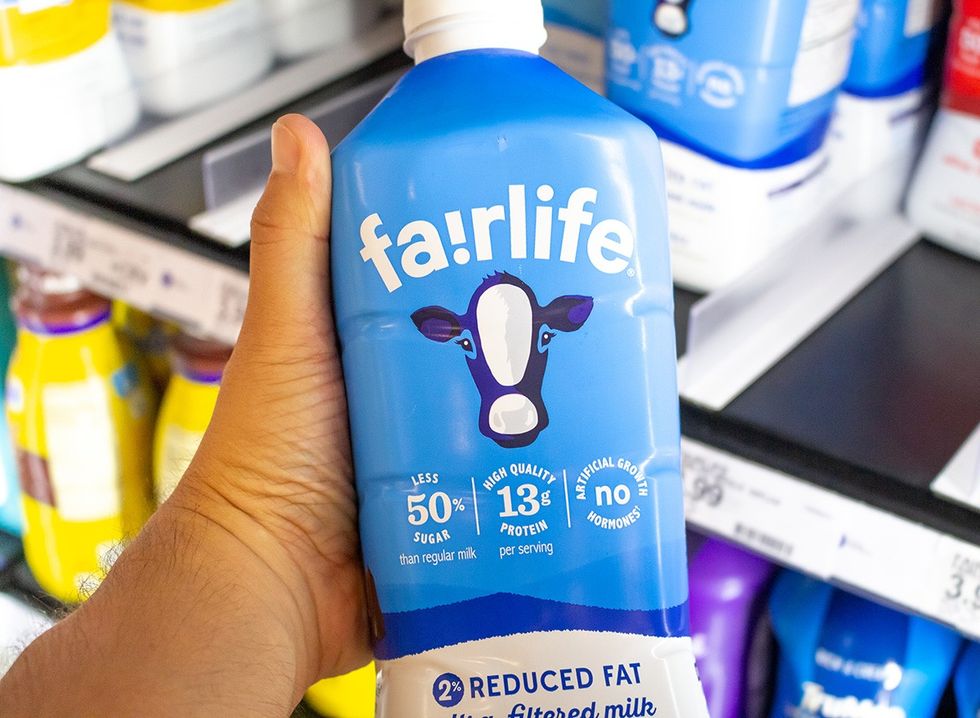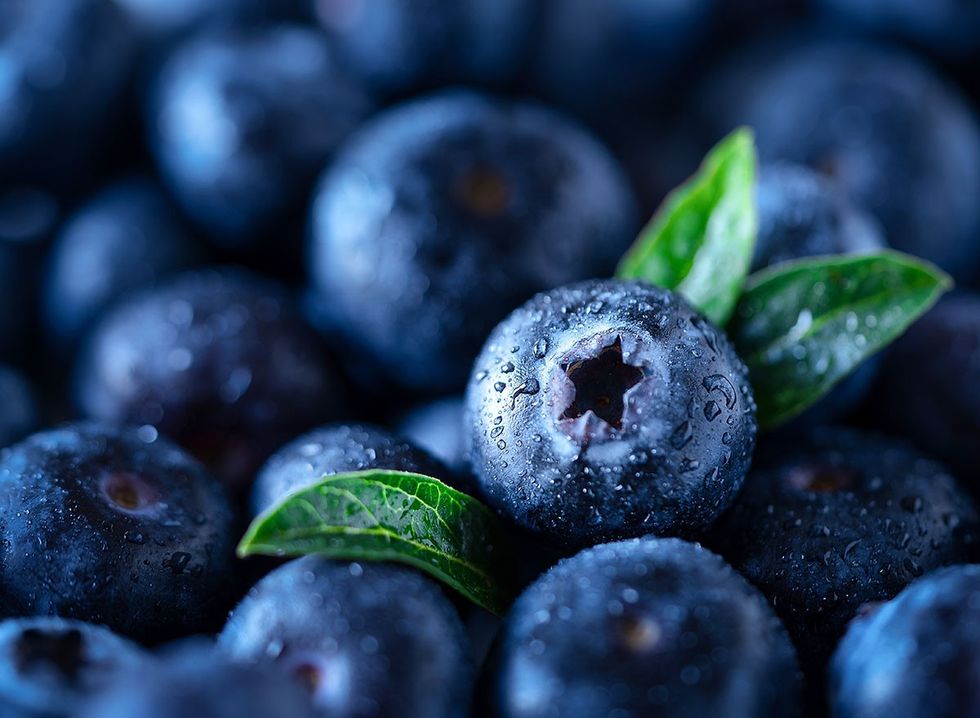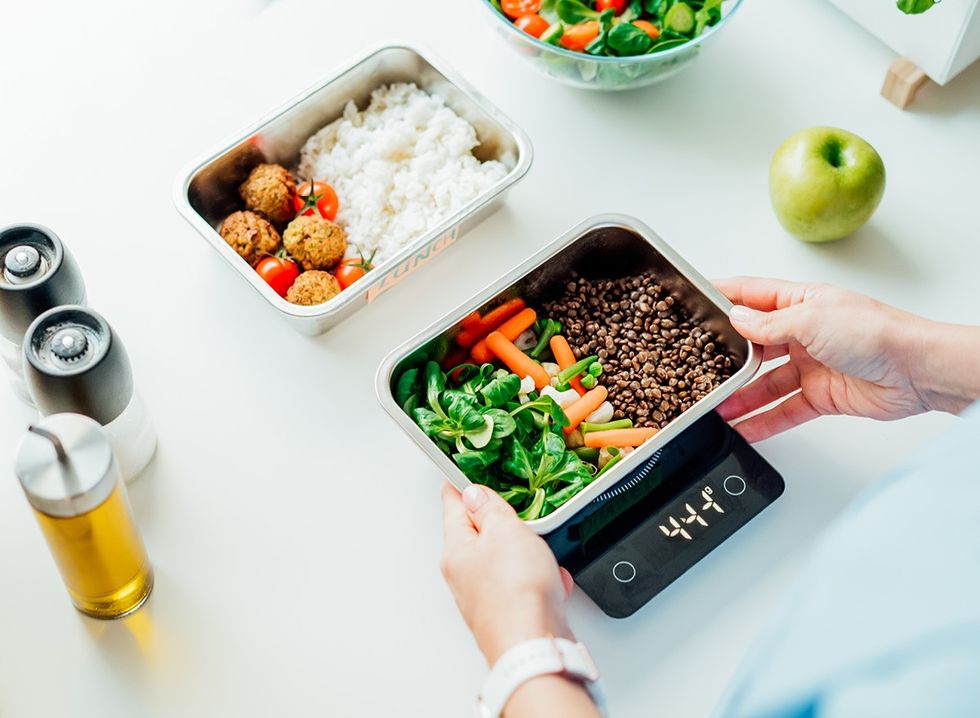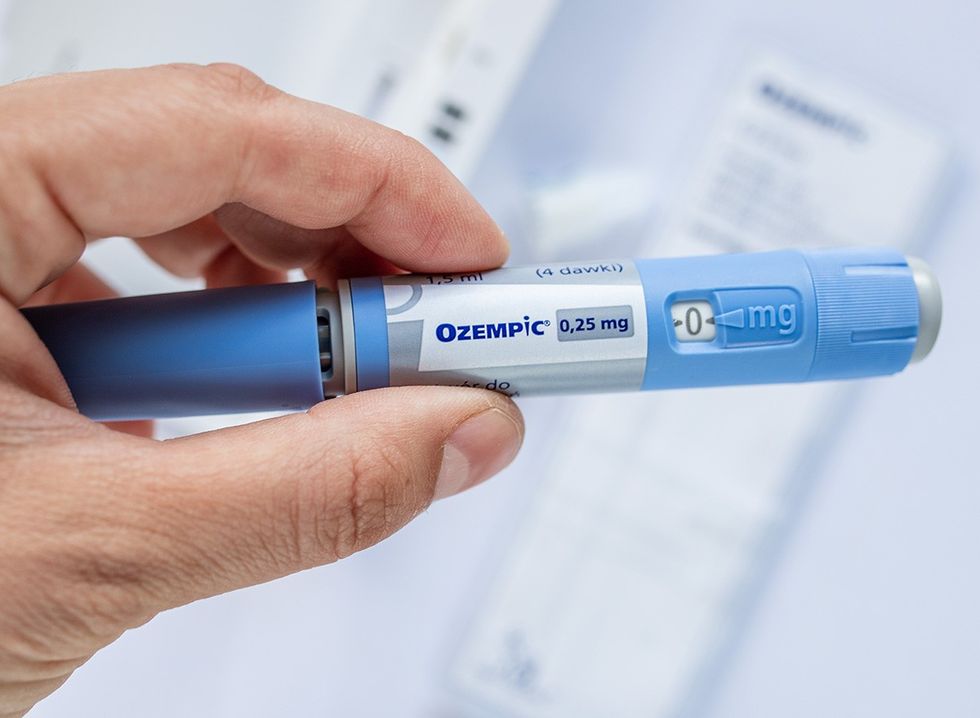Struggling to hit your protein targets without blowing your calorie budget? You're not alone. Whether you're trying to shed those stubborn last few pounds or completely transform your physique, protein intake can make or break your results. Ivana Chapman, a BSc in Sports Science, Certified Strength & Conditioning Specialist (NSCA), and former International Karate athlete and Canadian National Natural Bikini Competitor, shares her expert insights on optimizing protein intake for maximum fat loss. With over 60,000 YouTube followers, Ivana has helped thousands achieve their fitness goals through smart nutrition strategies. Read on to discover how to strategically incorporate high-protein foods that will keep you satisfied while torching fat.
Why Lean Protein Matters: Beyond Burgers and Steaks
"A high protein diet doesn't necessarily mean that you'll lose weight," Ivana points out in her video. "If you're getting your protein with greasy burgers or fatty steaks, it's going to be hard to keep your calories down." She explains that to maximize fat loss, you need to prioritize lean protein sources—those lower in fat with more protein per calorie. This approach allows you to maintain muscle while creating the calorie deficit necessary for fat loss.RELATED:8 High-Protein Foods with Nearly Zero Calories That Melt Fat
Classic Protein Powerhouses: Chicken Breast, Eggs, and Whey
 Shutterstock
ShutterstockMost fitness enthusiasts are already familiar with certain protein staples. "My regular protein sources are chicken breast, which has about 35 grams of protein per 150 gram serving, Greek yogurt and cottage cheese, eggs and egg whites of course," says Ivana. She also mentions occasionally using whey protein powder after workouts, which provides 27 grams of protein per scoop with only 110 calories—an efficient protein-to-calorie ratio for those tracking their intake closely.
Greek Yogurt & Cottage Cheese: Choosing the Right Fat Percentage
 Shutterstock
ShutterstockWhen it comes to dairy products, not all options are created equal. "Greek yogurt has more protein than regular yogurt, but you'll also want to look at the percentage of milk fat because that will affect the calories per protein serving," Ivana advises. She compares different fat percentages in Greek yogurt: an 8% fat version provides 8 grams of protein for 270 calories, while a 0% version delivers 17 grams of protein for just 100 calories. Ivana personally prefers 2% versions as a compromise between taste satisfaction and nutrition profile.
Fairlife: The High-Protein Milk Game-Changer
 Shutterstock
Shutterstock"One protein source that you might not have thought about is high-protein milk," Ivana shares. She recommends Fairlife milk, which is lactose-free and offers 14 grams of protein per cup with just 130 calories. Ivana starts her mornings with a matcha latte made with this milk, sometimes adding extra protein to reach about 25 grams per serving. There are also 1% and 0% versions available for those wanting even more protein per calorie.
Scallops, Shrimp & White Fish: Seafood Protein Treasures
 Shutterstock
ShutterstockWhile tracking her macros, Ivana discovered some surprisingly protein-rich seafood options. "I realized how high scallops are in protein for low calories," she notes, adding that "six oysters is less than 60 calories with about six grams of protein." While fresh seafood isn't always convenient for daily meals, Ivana suggests considering options like shrimp for stir-fries or cocktails (avoiding battered versions), shrimp rings for easy snacking, and lean white fish like cod, haddock, and sole. She cautions about mercury levels in certain fish, recommending limiting chunk light canned tuna to three times weekly and avoiding larger predatory fish entirely.RELATED:10 Foods to Avoid If You're Trying to Burn Fat, Says Expert
Jerky & Meat Sticks: Protein On-The-Go
 Smart Protein AlternativesShutterstock
Smart Protein AlternativesShutterstockFor on-the-go protein, Ivana recommends jerky and meat sticks. "Be careful of the sodium level and try not to rely on these too much because they're highly processed meat," she cautions. However, she notes that there are increasingly more options made from better-quality meat sources. These can be convenient protein boosters when you need something portable.
Tofu & Edamame: Plant-Based Protein Stars
 16. TofuShutterstock
16. TofuShutterstock"One of the best plant-based sources of protein is tofu," Ivana states. With about 12 grams of protein per 100 grams for approximately 120 calories, tofu absorbs the flavors of other ingredients and sauces, making it versatile for stir-fries and other dishes. She particularly enjoys lemongrass-flavored tofu in salads from a local delivery place, demonstrating how protein sources can be incorporated into convenient meal options.
3, 4, or 5 Meals: Spreading Your Protein Throughout the Day
 Shutterstock
ShutterstockRegarding protein timing, Ivana believes in consistency. "It's helpful to have protein with every meal. It doesn't matter how many meals you decide to have," she explains. While the minimum for a fat loss or body recomposition diet is typically three meals daily, she recommends thinking about protein first when planning meals. Using her personal example of 140 grams daily (appropriate for someone weighing around 200 pounds), Ivana shows how to distribute this across different meal frequencies: 35 grams per meal for four meals, 47 grams for three meals, or 28 grams for five meals.RELATED:17 Pre-Meal Foods That Burn Fat Like Ozempic, According to an Expert
The 10x Protein Test: Parmesan, Bocconcini & Beyond
 Shutterstock
ShutterstockIvana shares a simple trick to determine if a food is truly high in protein. "Look at the amount of protein in the serving and add a zero to the end. If the calories are equal or less than the amount of protein with the zero, it passes," she explains. For example, if a food has 8 grams of protein, it should have no more than 80 calories to pass this test. She demonstrates with several examples: bocconcini cheese (8g protein/70 calories—pass), high-protein milk (16g protein/120 calories—pass), and parmesan cheese (6g protein/60 calories—pass). This quick calculation helps identify truly protein-dense foods.
Beans, Lentils & Chickpeas: Supplemental Protein Sources
 23. ChickpeasShutterstock
23. ChickpeasShutterstockNot all protein sources need to be "pure" protein foods. "You can also consider adding supplemental sources of protein," Ivana suggests, referring to foods that contribute meaningful protein along with other nutrients. These include chickpeas, lentils, black beans, green peas, black-eyed peas, edamame, and soybeans. While not as protein-dense as animal sources, they add fiber and can boost total protein intake when combined with main protein sources. For example, Ivana recommends adding black beans to lean turkey nachos for a protein boost.
Salmon & Steak: Balancing Fattier Protein Choices
 Shutterstock
ShutterstockDespite her emphasis on lean protein, Ivana doesn't suggest eliminating fat entirely. "Don't misunderstand me with the lean protein idea, it doesn't mean that you can't enjoy some fattier protein choices like steak or salmon," she clarifies. Instead, she recommends having them less frequently, in smaller portions, and balancing them with leaner options to manage total daily calories. She reminds readers that some fat is essential for absorbing fat-soluble vitamins and supporting hormonal health.RELATED:30 Best Protein Foods That Melt Fat Almost Instantly
Conclusion
 Stick to Certain ProteinsShutterstock
Stick to Certain ProteinsShutterstockFocusing on protein-rich foods is one of the most effective strategies for fat loss. By prioritizing lean protein sources, applying the 10x protein test, and distributing protein intake throughout the day, you can manage hunger, preserve muscle, and enhance your body's fat-burning capacity. As Ivana emphasizes, "When you're getting enough protein, it helps you manage your appetite in a calorie deficit, and you also support muscle protein synthesis." Additionally, protein increases the thermic effect of food, boosting your daily energy expenditure and making it easier to maintain a calorie deficit. With these strategies, you'll be well-equipped to transform your body composition and achieve sustainable fat loss results. And if you enjoyed this article, take advantage of these 15 Quick Ways to Lose Body Fat Percentage in a Week.













 Meal PlanningShutterstock
Meal PlanningShutterstock Shutterstock
Shutterstock Greek Yogurt with Berries and Chia Seeds
Greek Yogurt with Berries and Chia Seeds Lean Ground BeefShutterstock
Lean Ground BeefShutterstock Collagen ProteinShutterstock
Collagen ProteinShutterstock Bone BrothShutterstock
Bone BrothShutterstock 5. Broth (chicken or vegetable): 15 caloriesShutterstock
5. Broth (chicken or vegetable): 15 caloriesShutterstock 2. Cottage Cheese (14g protein per 1/2 cup)Shutterstock
2. Cottage Cheese (14g protein per 1/2 cup)Shutterstock Shutterstock
Shutterstock
 Amp Up Your Protein IntakeShutterstock
Amp Up Your Protein IntakeShutterstock Trying to Get Protein From Too Many SourcesShutterstock
Trying to Get Protein From Too Many SourcesShutterstock

 The Power of Green GuardiansShutterstock
The Power of Green GuardiansShutterstock Shutterstock
Shutterstock Shutterstock
Shutterstock Shutterstock
Shutterstock BerriesShutterstock
BerriesShutterstock 44. Brussels sprouts: 43 caloriesShutterstock
44. Brussels sprouts: 43 caloriesShutterstock Shutterstock
Shutterstock Shutterstock
Shutterstock Shutterstock
Shutterstock Shutterstock
Shutterstock
 Shutterstock
Shutterstock Shutterstock
Shutterstock Shutterstock
Shutterstock Shutterstock
Shutterstock Shutterstock
Shutterstock Shutterstock
Shutterstock Shutterstock
Shutterstock Shutterstock
Shutterstock Shutterstock
Shutterstock Shutterstock
Shutterstock
 Shutterstock
Shutterstock
 Shutterstock
Shutterstock
 Shutterstock
Shutterstock Shutterstock
Shutterstock Shutterstock
Shutterstock Shutterstock
Shutterstock Shutterstock
Shutterstock

 I'm a Nutritionist and These 9 High-Protein Snacks Keep My Clients Full While Losing 50 Pounds
I'm a Nutritionist and These 9 High-Protein Snacks Keep My Clients Full While Losing 50 Pounds
 Shutterstock
Shutterstock 2. Processed FoodsShutterstock
2. Processed FoodsShutterstock Shutterstock
Shutterstock Shutterstock/Prostock-studio
Shutterstock/Prostock-studio Shutterstock
Shutterstock Pro TipsShutterstock
Pro TipsShutterstock Shutterstock
Shutterstock Shutterstock
Shutterstock Shutterstock
Shutterstock Shutterstock
Shutterstock Don’t Drink as Much AlcoholShutterstock
Don’t Drink as Much AlcoholShutterstock Most Women on GLP-1s Are Making a Few Common MistakesShutterstock
Most Women on GLP-1s Are Making a Few Common MistakesShutterstock Soda and Sugary DrinksShutterstock
Soda and Sugary DrinksShutterstock Shutterstock
Shutterstock Eat BreakfastShutterstock
Eat BreakfastShutterstock And Improve Insulin SensitivityShutterstock
And Improve Insulin SensitivityShutterstock Belly Flab Strip Tip: Sugar and Fat Calories Leave Its Mark on Your BodyShutterstock
Belly Flab Strip Tip: Sugar and Fat Calories Leave Its Mark on Your BodyShutterstock Shutterstock
Shutterstock The Drugs Mimic the GLP-1 Hormone Naturally Produced by the BodyShutterstock
The Drugs Mimic the GLP-1 Hormone Naturally Produced by the BodyShutterstock